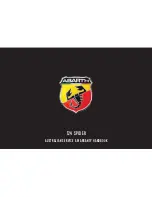
Disengaging the differential locks
You can disengage the differential locks in the
following order:
;
,
?
,
=
.
X
To simultaneously disengage all differen-
tial locks: press switch
=
.
Yellow activation indicator lamps
A
and red
function indicator lamps
:
go out.
After approximately three seconds of normal
driving, ABS, 4ETS, ESP
®
and BAS are activa-
ted.
The
Differential locks active ABS
Differential locks active ABS
and ESP not available
and ESP not available
message disap-
pears in the multifunction display and the
å ! ÷
warning lamps in the instru-
ment cluster go out.
X
Shift the transfer case to the HIGH RANGE
on-road position (
Y
page 124).
If red function indicator lamps
:
do not go out
when disengaging the differential locks:
X
Observe the traffic situation.
X
Make slight steering movements while the
vehicle is in motion.
Red function indicator lamps
:
go out when
the differential locks are disengaged.
Towing a trailer
Important safety notes
G
WARNING
The braking system can overheat if you leave
your foot on the brake pedal while driving.
This increases the braking distance and could
even cause the braking system to fail. There is
a risk of an accident.
Never use the brake pedal as a footrest. Do
not simultaneously depress both the brake
pedal and the accelerator pedal while driving.
G
WARNING
You could lose control of the vehicle/trailer
combination if it begins to swerve. The vehi-
cle/trailer combination could even overturn.
There is a risk of an accident.
On no account should you attempt to
straighten out the vehicle/trailer combina-
tion by increasing speed. Decrease your
speed and do not countersteer. Brake if nec-
essary.
G
WARNING
If the ball coupling is not fitted correctly and
the bolts supplied are not tightened to the
specified tightening torque, the trailer could
come loose. There is a risk of an accident.
Always fit the ball coupling as described.
Observe the specified tightening torque when
fitting the coupling.
G
WARNING
If the maximum permissible load for a carrier
system is exceeded, the carrier could come
loose from the vehicle and endanger other
road users. There is a risk of an accident and
injury.
Never exceed the maximum permissible load
when using a carrier.
!
If you have a trailer tow hitch retrofitted,
changes to the engine cooling system may be
necessary, depending on the vehicle type.
If you have a trailer tow hitch retrofitted,
observe the anchorage points on the chassis.
Retrofitting a trailer tow hitch is only permissible
if a trailer load is specified in your vehicle docu-
ments. If this is not the case, then the vehicle is
not approved for towing a trailer.
For more information, please contact a qualified
specialist workshop.
Exceeding the maximum permissible nose-
weight of the trailer drawbar on the ball coupling
may cause damage.
Damage may be caused to the following:
R
towing vehicle
R
trailer
R
ball coupling
R
trailer tow hitch
The vehicle/trailer combination could become
unstable.
The vehicle/trailer combination could also
become unstable if the noseweight used is lower
than the minimum permissible noseweight.
Towing a trailer
127
Dr
ivi
ng
an
dp
arki
ng
Z
















































